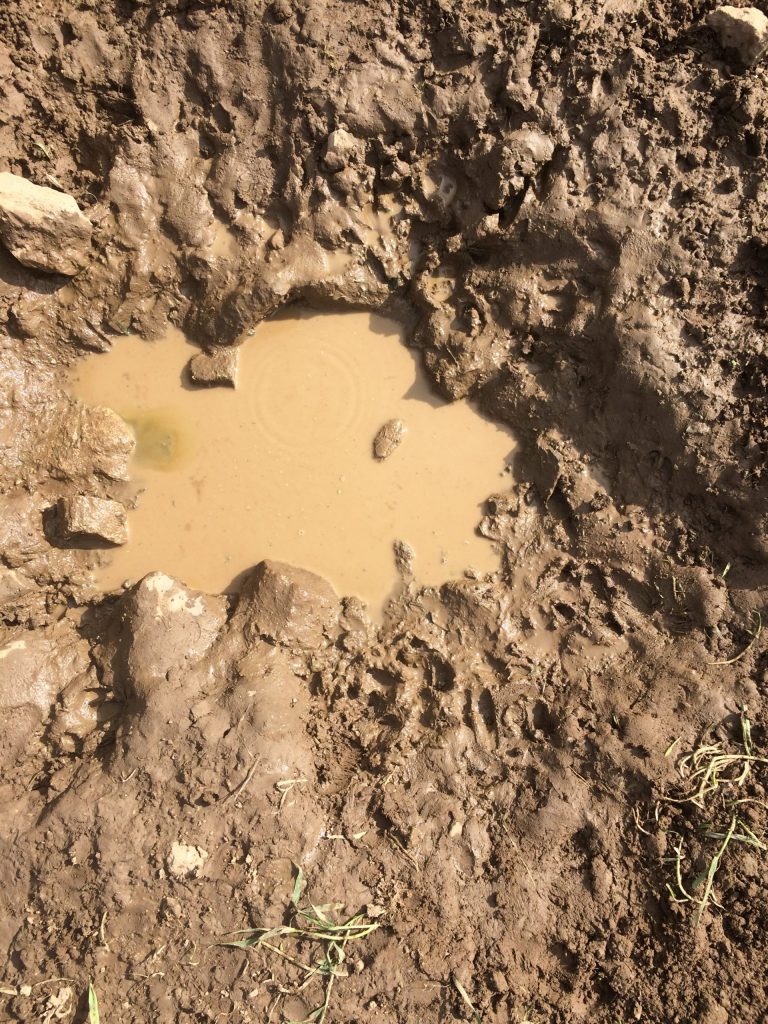Geophagia is the deliberate consumption of soil. It is a widespread practice with more than 200 species observed eating dirt, including humans. It has recently gained some favorable press as there appears to be notable human health benefits – from improving digestion to combating allergies.
But this is a deer blog and I will let others debate the human health implications of geophagia.
Deer eat dirt. They are herbivores and plants are dirty. But sometimes deer eat dirt on purpose. There are several theories as to why deer consume soil. The most commonly proliferated theory is to replenish mineral deficits. Indeed, a whole industry has grown up around mineral licks for deer. Trophy rock, lucky buck, antler king – you can guess to whom and what they are marketing. (By the way, no studies have found that mineral licks increase antler size or weight.)
However, studies have found no difference in trace elements in favored dirt-eating locations. While mineral intake is supplemented by this behavior, it appears to be a secondary benefit. The only mineral deer really seek out is sodium which is particularly important for lactation (FYI – bucks don’t lactate).
The second theory is that compounds in soils combat plant toxins and improve rumen function during the transition between seasons (and forage). This actually has research behind it. Clay in particular helps with belly issues and those soils with high clay content are often sought after.
Eating dirt is obviously beneficial or deer (and the laundry list of other species) wouldn’t do it. But there is a downside. Soil has its own microbiome. When deer take a mouthful, they don’t spit out the bad and swallow the good. And deer are walking biomes themselves. They carry a plethora of bacteria and parasites. The majority of the time these hitchhikers leave deer no worse for wear.
But CWD is not a bacterium or a parasite. CWD kills every deer it infects. And now it has been proven that mineral licks are environmental reservoirs for CWD prions.
To be honest, this is not surprising news. We know infected deer shed CWD prions (in saliva, urine, and feces) and we know CWD prions persist in the environment for years. The problem has always been the difficulty in detecting CWD prions in environmental samples.
Researchers in Wisconsin collected soil samples, water samples, and water samples when the mud was stirred up from the bottom of the puddle from 11 mineral lick sites (10 of which were man-made) within the CWD zone. Lab analysis detected CWD prions at 9 of the 11 mineral licks. So for all those Doubting Thomas’s – here’s your proof.
Add this new finding to research that shows prions bind tightly to clay soils and remain infectious – the trifecta of infectivity!
There is no question that CWD prions are being shed by infected animals and areas of frequent use are serving as reservoirs for disease exposure. But this may have broader implications than for just deer. Did you know that 12 species of mammal visited mineral licks in Nepal which included civets, mongoose, and a tiger!?! We don’t have civets or tigers in North America but we do have raccoons, squirrels, bobcats, bears, birds, and cows. All of which have been documented at mineral licks.
And let’s not forget about people. Man-made mineral licks need to be maintained by man.
We can’t stop deer from eating dirt. But we can stop creating artificial congregation points, which then become disease reservoirs. A plethora of non-cervid species are being exposed to CWD prions. CWD prions are bad news any way you look at them. Limiting exposure is in everyone’s best interest.
Wildlife Biologist
If you would like to learn more about chronic wasting disease, Dr. David Walter, Assistant Unit Leader for the Pennsylvania Cooperative Fish and Wildlife Research Unit recorded a webinar on Truths and Myths about Chronic Wasting Disease.
If you would like to receive email alerts of new blog posts, subscribe here.
And Follow us on Twitter @WTDresearch
